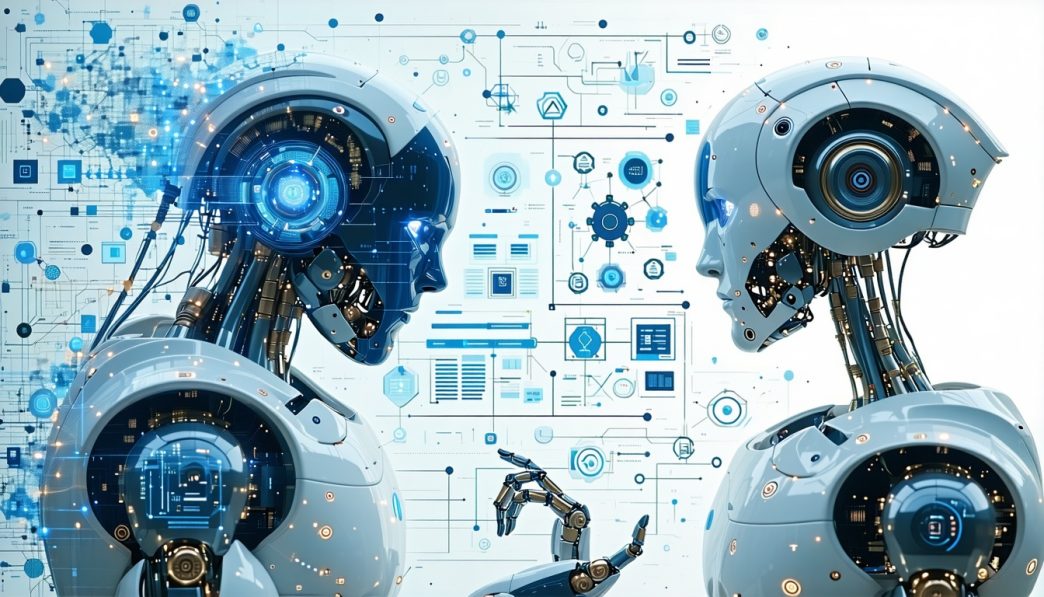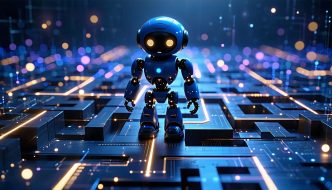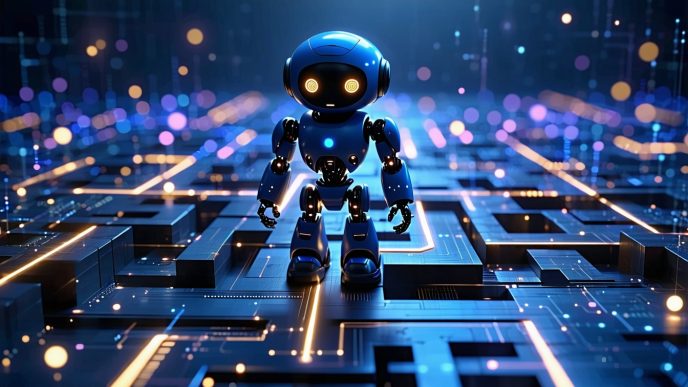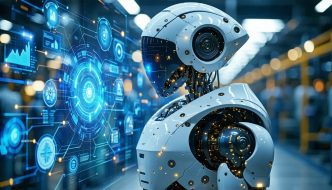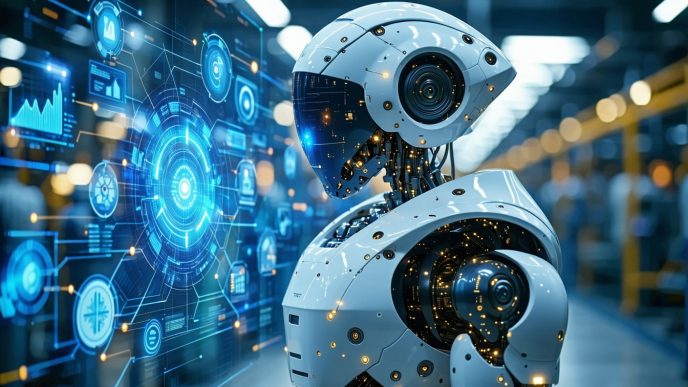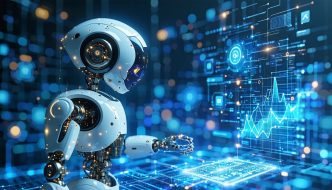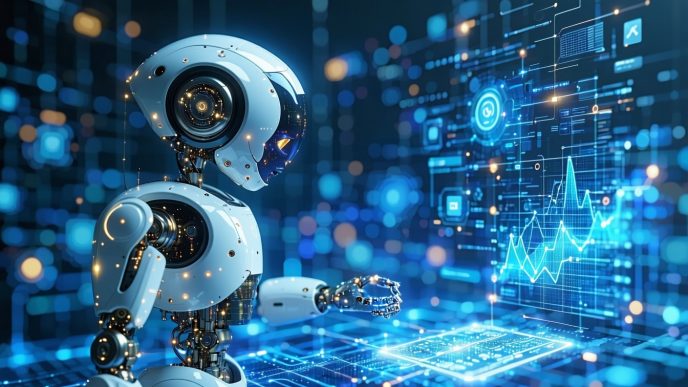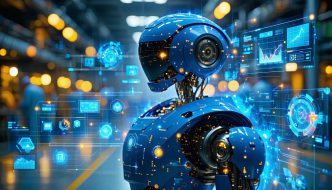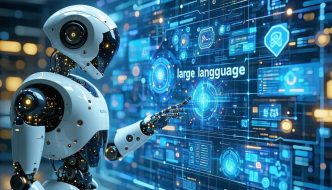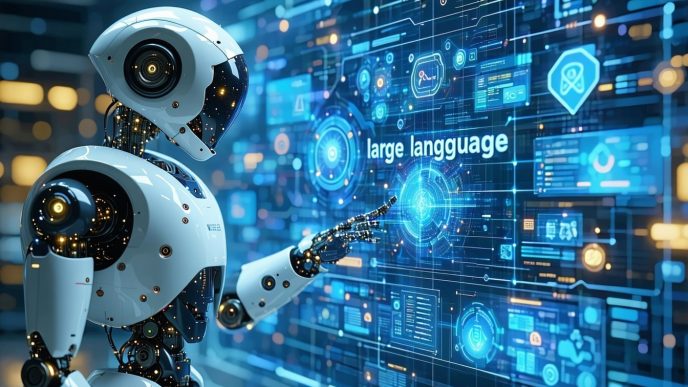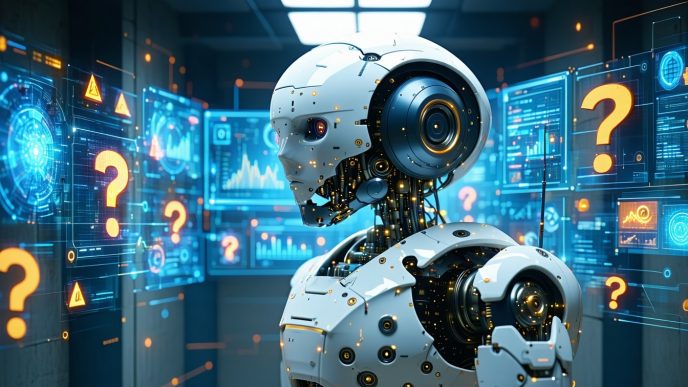Decoding Reinforcement Learning for Robotics
Introduction to Reinforcement Learning
Reinforcement learning (RL) is a subset of machine learning where an agent learns to make decisions by taking actions in an environment to maximize cumulative rewards. This learning process mimics how humans and animals learn through interactions with their surroundings. In the context of robotics, RL enables robots to adapt their behaviors based on feedback received from their actions.
The core element of reinforcement learning is the trial-and-error approach that guides the robot’s ability to learn and make decisions. As the robot interacts with its environment, it receives feedback in the form of rewards or penalties, which influence its future actions. This method allows robots to optimize their performance in complex tasks over time.
Importance of Reinforcement Learning in Robotics
Reinforcement learning plays a critical role in enhancing the capabilities of robots. Its significance can be summarized in the following areas:
| Aspect | Description |
|---|---|
| Adaptability | RL allows robots to adjust their strategies based on real-time data, making them suitable for dynamic environments. |
| Autonomy | By enabling robots to learn independently, RL reduces the need for human intervention, allowing for more autonomous operations. |
| Complex Decision Making | Robots can solve intricate problems that require a series of decisions, functioning effectively in situations where traditional programming would fall short. |
| Improved Efficiency | Continuous learning from experiences enables robots to perform tasks more efficiently with less trial and error over time. |
Robots employing reinforcement learning can optimize tasks such as navigation, interaction with objects, and completing complex pathways. This makes RL an essential topic in understanding robot learning models explained.
Furthermore, reinforcement learning integrates well with other AI techniques, such as large language models in robotics and real-time AI processing in robots. This combination enhances productivity and decision-making capabilities in robots, paving the way for innovations like self-driving vehicles and smart home systems.
By grasping the fundamental principles of reinforcement learning, enthusiasts can appreciate how robots make real-time decisions, adapt, and improve their operations autonomously.
Basic Concepts of Reinforcement Learning
Reinforcement learning (RL) is a crucial aspect of how modern robots learn and make decisions. This section breaks down the fundamental concepts that underpin RL, including the roles of agents, environments, actions, rewards, and penalties.
Agent, Environment, and Actions
In reinforcement learning, the agent is the robot or system that learns to make decisions. The environment is everything the agent interacts with while learning, encompassing objects, obstacles, and conditions. The actions are the choices the agent can make within its environment to influence it.
The relationship between the agent and the environment can be summarized as follows:
| Component | Description |
|---|---|
| Agent | The learning entity that performs actions. |
| Environment | The surroundings that the agent interacts with. |
| Actions | The different responses the agent can take based on its learning. |
For example, in a robot navigating a room, the agent is the robot itself, the environment consists of the room’s layout, and the actions involve moving forward, turning, or stopping.
Rewards and Penalties
Rewards and penalties are essential in guiding the agent’s learning process. A reward is a positive reinforcement provided when the agent performs a desirable action, encouraging it to repeat that behavior. Conversely, a penalty is a negative reinforcement that discourages certain actions.
The reward structure can be represented in a simple table:
| Outcome | Type | Value |
|---|---|---|
| Successful obstacle avoidance | Reward | +10 |
| Hitting an obstacle | Penalty | -5 |
| Completing a task effectively | Reward | +20 |
Through these feedback mechanisms, robots gather information about which actions yield beneficial results and which do not. Over time, the agent refines its decision-making processes based on accumulated experiences, allowing it to perform tasks more efficiently.
Understanding these fundamental concepts is vital for grasping how robots learn and operate effectively in various environments. For more in-depth discussions about the intricacies of AI in robotic systems, refer to our articles on ai and decision making in robots and real time ai processing in robots.
How Robots Learn Using Reinforcement Learning
Reinforcement learning (RL) allows robots to learn from their experiences in a dynamic environment. This section explores the fundamental methods through which robots acquire knowledge and improve their decision-making abilities.
Trial and Error Approach
The trial and error approach is a core concept in reinforcement learning. In this method, robots interact with their environment over time, making various decisions to achieve a specific goal. This process enables them to learn the most effective actions by evaluating the outcomes of their choices.
During training, a robot will try different actions in response to various situations. For instance, a robot navigating a maze might initially move in random directions. It receives feedback in the form of rewards for successful actions (escaping the maze) and penalties for unsuccessful ones (bumping into walls). Gradually, the robot learns which actions lead to positive outcomes, enhancing its ability to complete tasks efficiently.
| Action Taken | Outcome | Reward/Penalty |
|---|---|---|
| Move Left | Bumps wall | -1 (penalty) |
| Move Right | Clear path | +1 (reward) |
| Move Forward | Reaches goal | +10 (reward) |
Exploration vs. Exploitation
In reinforcement learning, robots face a critical balance between exploration and exploitation. Understanding this balance is essential for effective learning.
-
Exploration involves trying out new actions to discover their effects. This is crucial for learning about the environment and finding potentially better strategies. While it can lead to short-term penalties, exploration is essential for long-term success.
-
Exploitation is the process of using knowledge already acquired to maximize rewards. Robots leverage past experiences to make decisions that are likely to yield the highest results based on what they have learned.
Finding the right balance between these two approaches is key. If a robot only exploits known actions, it may miss out on better alternatives. Conversely, if it focuses solely on exploration, it may not effectively achieve its goals.
To visualize this balance, consider the following table representing a robot’s decision-making process:
| Scenario | Action Taken | Reason |
|---|---|---|
| 1. Explore | Random move | Discover new paths |
| 2. Exploit | Best-known path | Maximize reward |
| 3. Reassess | Mix of both | Adapt strategy |
By employing both exploration and exploitation, robots enhance their learning capabilities, leading to more adaptive and intelligent behaviors. For further insights into how robots make decisions, refer to our article on ai and decision making in robots.
Reinforcement Learning Algorithms in Robotics
Reinforcement learning plays a critical role in how robots learn and adapt to their environments. Several algorithms support this process, enabling robots to make efficient decisions based on their experiences and interactions. This section outlines three key algorithms: Q-Learning, Deep Q-Networks (DQN), and Policy Gradient Methods.
Q-Learning
Q-Learning is a foundational algorithm in reinforcement learning that allows an agent to learn the value of actions in various states to maximize rewards. It operates on a simple principle: the agent learns an action-value function, which helps predict the expected utility of taking a given action in a specific state. This results in an optimal policy that guides the agent’s decisions.
Key Features of Q-Learning:
- Value Functions: Q-Learning uses a value function, Q(s, a), representing the expected future rewards from taking action a in state s.
- Exploration: Agents explore different actions to gather information and improve their knowledge of the environment.
- Convergence: With enough exploration and proper learning rates, Q-Learning converges to the optimal action-value function over time.
Q-Learning Table:
| Feature | Description |
|---|---|
| Learning Rate (α) | Controls how much new information overrides old information |
| Discount Factor (γ) | Determines the importance of future rewards |
| Exploration Rate (ε) | Probability of exploring a new action versus exploiting known actions |
Deep Q-Networks (DQN)
Deep Q-Networks combine Q-Learning with neural networks, allowing robots to tackle more complex environments. DQNs use deep learning to approximate the Q-function, enabling agents to learn from high-dimensional state spaces like images and sensor data.
Key Features of DQN:
- Neural Network: DQNs utilize neural networks to generalize the Q-value function across states, handling vast data inputs more effectively.
- Experience Replay: This technique stores past experiences and samples them during training, improving learning stability and efficiency.
- Target Network: A separate network is periodically updated to serve as a more stable target during training, which helps mitigate oscillations in learning.
DQN Table:
| Component | Description |
|---|---|
| Neural Network | Approximates the Q-values for various actions |
| Experience Replay | Enhances learning by reusing previous experiences |
| Target Network | Stabilizes training by providing a consistent target |
Policy Gradient Methods
Policy Gradient Methods focus directly on optimizing the policy, which is the behavior the agent chooses. These methods adjust the policy parameters through gradients based on the rewards received, enabling more flexible learning strategies, especially in environments with continuous action spaces.
Key Features of Policy Gradient Methods:
- Direct Optimization: Rather than estimating value functions, these methods aim to maximize expected rewards by adjusting the policy.
- Stochastic Policies: They allow for randomness in action selection, which can lead to better exploration of the state space.
- Variability: Policy Gradient Methods can effectively handle a variety of tasks, from robot control to decision-making challenges.
Policy Gradient Table:
| Aspect | Description |
|---|---|
| Action Distribution | Policy defines the probability of taking each action |
| Gradient Ascent | Updates the policy based on the gradient of expected rewards |
| Variance Reduction | Techniques like Baseline help reduce variance in reward estimates |
These algorithms form the backbone of robot learning models explained in reinforcement learning. By utilizing Q-Learning, DQNs, and Policy Gradient Methods, robots can enhance their decision-making capabilities, allowing them to interact with and adapt to their environments more efficiently. For further insights into how AI impacts robot decision-making, explore our article on ai and decision making in robots.
Applications of Reinforcement Learning in Robotics
Reinforcement learning has found numerous applications within robotics, enabling machines to perform complex tasks with a high degree of autonomy. Below are three key areas where reinforcement learning plays a crucial role: robot navigation, autonomous driving, and object manipulation.
Robot Navigation
Robot navigation involves directing robots to move from one point to another efficiently while avoiding obstacles. Reinforcement learning enables robots to learn optimal paths through trial and error. By receiving feedback in the form of rewards for successful navigation or penalties for collisions, robots can improve their decision-making over time.
| Navigation Strategy | Description |
|---|---|
| A* Algorithm | A pathfinding algorithm that finds the shortest path between points. |
| Reinforcement Learning | Robots utilize environmental feedback to optimize routes autonomously. |
Robots that employ reinforcement learning can adapt their navigation strategies based on changing environments. For more details on how robots navigate effectively, see our article on robot pathfinding and decision making.
Autonomous Driving
Reinforcement learning is vital for the development of autonomous vehicles, allowing them to make real-time decisions based on their surroundings. These systems learn to adjust their behavior by analyzing feedback from various sensors and cameras, optimizing actions such as acceleration, braking, and turning.
| Driving Scenario | Action Taken |
|---|---|
| Traffic Signal | Learn to stop at red lights and proceed on green. |
| Pedestrian Detection | React to pedestrians with a safe stopping distance. |
Through reinforcement learning, vehicles can adapt to different driving conditions, improving safety and efficiency. To understand more about AI’s role in vehicles, check our article on ai and decision making in robots.
Object Manipulation
In robotics, object manipulation refers to the ability of robots to interact with objects in their environment, such as picking up, holding, and moving items. Reinforcement learning enhances this capability by allowing robots to learn the best techniques for handling various objects, adjusting their grip and movement based on sensory feedback.
| Manipulation Task | Key Learning Element |
|---|---|
| Grasping | Adjust grip strength based on object weight and texture. |
| Placing | Learn optimal angles and distances for placing objects. |
By utilizing reinforcement learning, robots can perform intricate tasks more efficiently. For more on the applications of AI in robotics, refer to our article on large language models in robotics and real-time AI processing in robots.
Challenges and Limitations of Reinforcement Learning in Robotics
While reinforcement learning presents exciting opportunities for robotic systems, several challenges and limitations hinder its widespread application. Understanding these obstacles is essential for anyone interested in the development of robotic learning models.
Training Time and Complexity
Reinforcement learning often requires extensive training periods. Robots must go through numerous iterations to learn from their actions and adjust their behavior accordingly. The time taken for effective training can vary significantly depending on the complexity of the tasks and environments involved.
The following table illustrates the estimated training times for various reinforcement learning tasks in robotics:
| Task | Estimated Training Time |
|---|---|
| Simple Navigation | 1–2 hours |
| Object Manipulation | 4–6 hours |
| Autonomous Driving | 10–20 hours |
| Multi-Agent Systems | 24 hours or more |
These extended training times can be a barrier for developers and researchers seeking to deploy robots in real-world scenarios quickly. Moreover, the complexity of environmental dynamics increases the difficulty, making it essential to optimize the training process for efficient learning.
Generalization to New Environments
Another significant challenge in reinforcement learning is the ability of robots to generalize their learning to new or unexpected environments. A robot trained in a specific setting may struggle to adapt to altered conditions or tasks that differ from its training scenarios.
This limitation arises because the robot’s learning is heavily influenced by the experiences it has within the training environment. If the robot encounters a situation that deviates from its prior experiences, it may not respond effectively.
For example, a robot trained to navigate hallways may find it challenging to operate in an open outdoor area, leading to difficulties in tasks such as robot pathfinding and decision making.
Developers are continually working on methods to improve generalization in robot learning models. Consider exploring advancements such as multi-agent AI in robotics and edge AI in robots that aim to address these challenges by enhancing adaptability and learning efficiency.
Understanding these limitations is key to appreciating the complexities of building effective robotic systems capable of advanced decision-making using AI. For further insight into the intersection of AI technology and robotics, check out our article on ai and decision making in robots.
Future of Reinforcement Learning in Robotics
As the field of robotics continues to evolve, reinforcement learning is emerging as a crucial component in enhancing robotic capabilities. This section explores the advancements in deep reinforcement learning and the potential impacts on smart homes and healthcare.
Advancements in Deep Reinforcement Learning
Deep reinforcement learning combines reinforcement learning with deep learning techniques, allowing robots to process vast amounts of information and learn in complex environments. This combination enables robots to exhibit more sophisticated behaviors and adapt to new challenges more effectively.
Recent advancements include improvements in algorithms that enhance learning efficiency and performance. These algorithms leverage neural networks to approximate value functions and policies, facilitating more effective decision-making. As these models become more refined, robots can achieve higher levels of autonomy and improved task performance.
| Technique | Key Features | Potential Benefit |
|---|---|---|
| Double DQN | Reduces overestimation bias | More reliable training |
| Dueling DQN | Separates value and advantage estimations | Faster convergence |
| Proximal Policy Optimization | Maintains a balance between exploration and exploitation | Improved stability |
These advancements are central to the development of more adaptive and capable robotic systems. For further insight into AI decision-making in robotics, refer to our article on ai and decision making in robots.
Potential Impacts on Smart Homes and Healthcare
The integration of reinforcement learning into robotics holds significant promise for smart homes and healthcare applications. In smart home environments, robots equipped with advanced learning models can optimize energy usage, enhance security, and provide personalized assistance to residents.
In healthcare, robots can assist in patient care, medication management, and rehabilitation programs. By utilizing learning models, these robots can adapt to individual patient needs, improving the overall quality of care. They can learn from their interactions and adjust their approaches based on real-time feedback, offering tailored support to patients.
Robots in these settings are expected to facilitate:
| Application | Benefit |
|---|---|
| Smart Home Management | Increased convenience and energy efficiency |
| Medical Assistance | Improved patient outcomes and personalized care |
| Rehabilitation Support | Enhanced recovery processes through adaptable routines |
The use of reinforcement learning in these domains not only enhances the capabilities of robots but also transforms the way people interact with technology in their daily lives. For additional insights into robotics, check our coverage on autonomous robot decision mistakes and explore the implications for multi agent ai in robotics.


